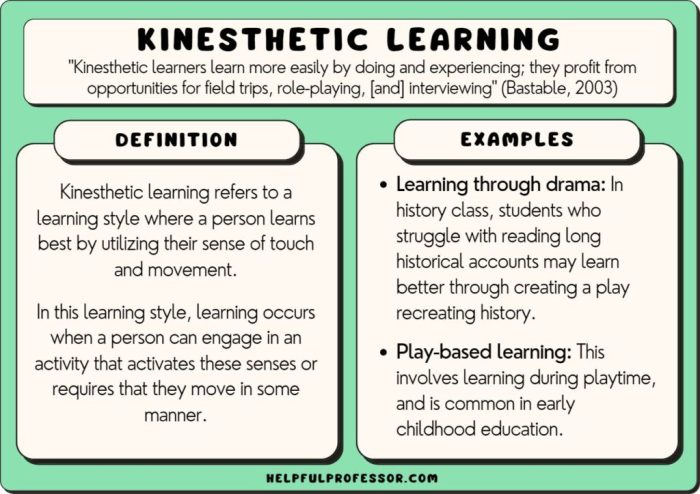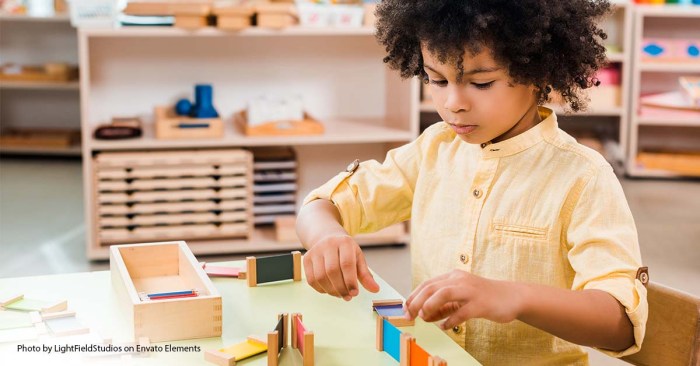Memorization techniques for kinesthetic learners unlock the power of movement and physical engagement to enhance memory retention. By incorporating these techniques, learners can transform passive learning into an active and embodied experience, leading to improved recall and deeper understanding.
This comprehensive guide explores the types, implementation, and benefits of kinesthetic memorization techniques. It provides practical strategies for creating a learning environment that supports kinesthetic learners, enabling them to thrive in their educational endeavors.
Memorization Techniques for Kinesthetic Learners

Kinesthetic learning, a learning style that involves movement and physical engagement, plays a crucial role in effective memorization. By incorporating movement and physical activities into learning, kinesthetic learners can enhance their ability to retain and recall information.
Types of Kinesthetic Memorization Techniques
| Technique | Description | Examples |
|---|---|---|
| Physical Tracing | Tracing words, letters, or shapes with the finger or a pointer. | Writing letters in sand, tracing shapes on a whiteboard. |
| Gestural Representation | Using gestures or body movements to represent concepts. | Acting out a scene from a story, using gestures to explain a scientific concept. |
| Kinesthetic Writing | Writing while moving or using a specific movement pattern. | Writing words in the air, writing on a vertical surface while standing. |
| Tactile Manipulation | Manipulating physical objects to aid memorization. | Using building blocks to represent mathematical concepts, handling objects related to a topic. |
| Locomotor Movement | Moving around while studying or reciting information. | Walking while listening to a lecture, pacing while memorizing vocabulary. |
Implementation of Kinesthetic Memorization Techniques, Memorization techniques for kinesthetic learners
- Identify your learning style and incorporate techniques that align with it.
- Create a personalized memorization plan that includes movement and physical activities.
- Adapt different techniques to various learning materials, such as using physical tracing for spelling and locomotor movement for historical events.
Enhancing Memorization through Kinesthetic Activities
Physical activities can significantly enhance memorization. Games, simulations, and hands-on experiences provide opportunities for movement and engagement, leading to improved retention. Research has demonstrated the effectiveness of kinesthetic activities in improving memory performance.
Designing a Kinesthetic Learning Environment
Creating a learning environment that supports kinesthetic learners is essential. Consider classroom setup, furniture, and materials that facilitate movement and engagement. Sensory elements, such as scents and textures, can also enhance the learning experience.
FAQ Resource
What are the benefits of using kinesthetic memorization techniques?
Kinesthetic memorization techniques improve memory retention, enhance cognitive function, reduce stress, and foster a positive learning experience.
How can I create a kinesthetic learning environment?
Incorporate movement into lessons, use manipulatives and hands-on activities, provide opportunities for physical breaks, and create a flexible learning space that encourages movement.
What are some examples of kinesthetic memorization techniques?
Body mapping, gesture-based recall, kinesthetic writing, and physical flashcards are effective kinesthetic memorization techniques.

